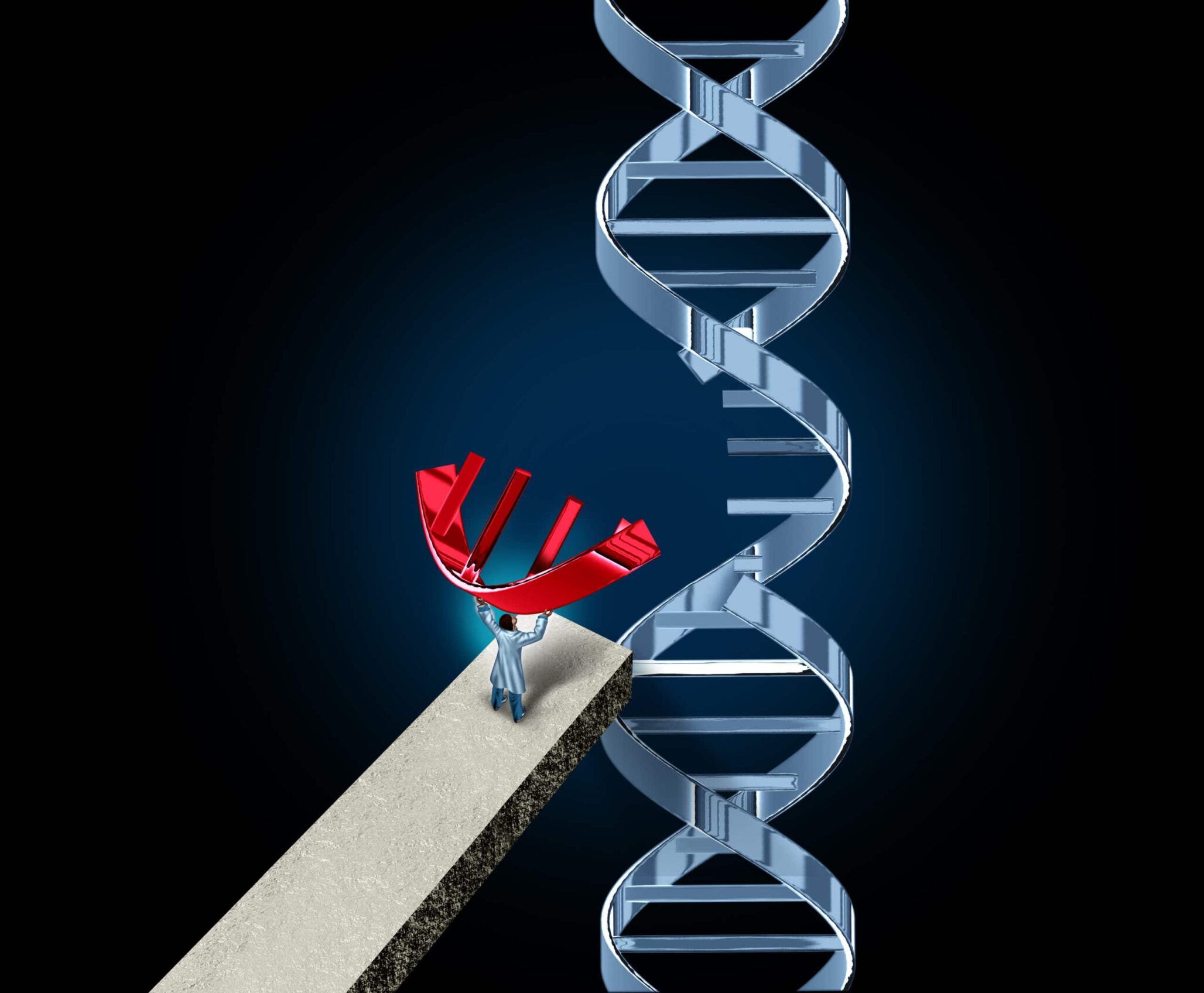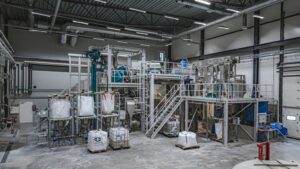CRISPR technology has the potential to revolutionize how we produce food, manage resources, and keep agriculture sustainable and highly productive in the face of a changing climate.
The World Agri-Tech Innovation Summit, held in San Francisco March 19 and 20, brought together over 2500 delegates from all parts of the agriculture value chain and more than four dozen countries. The two-day Summit focused on commercializing solutions for climate-resilient agriculture and was jam-packed with food for thought. Over the coming week, we’ll bring you a multi-part series featuring highlights from World Agri-Tech.
One of the most interesting World Agri-Tech sessions dug into CRISPR’s many and diverse opportunities. Moderated by Howard-Yana Shapiro, a distinguished senior fellow at the World Agroforestry Centre (ICRAF), the panel discussion featured diverse scientific thought leaders, each of whom is using CRISPR to achieve different goals and each of whom sees exciting opportunities ahead for the technology. Here’s a snapshot of their discussion:
Crop Nutrition
In order to grow the food necessary to feed Earth’s billions, farmers currently have little choice but to use large quantities of fertilizer that carry very significant bottom line cost. However, much of that investment is wasted: only approximately 50 per cent of the nitrogen applied actually serves its intended purpose. The rest is either denitrified and lost to the atmosphere as greenhouse gas or lost via runoff into water systems where it contributes to water quality issues and algal blooms. What if CRISPR could change all of that?
Panelist Eduardo Blumwald, distinguished professor of cell biology in UC Davis’s Department of Plant Sciences is working on a way for CRISPR to help crops harvest nitrogen from the air.
In theory, reducing our reliance on conventional fertilizers has an obvious solution, since 80% of our air is nitrogen and 10 to 15 per cent of soil bacteria are able to fix ammonium that could serve as plant food. The challenge, of course, is to encourage bacteria that are capable of fixing nitrogen to actually do that job. Fixation is dramatically limited because the oxygen in soil inhibits the nitrogenase enzyme necessary for the nitrogen fixing process.
That’s a problem with a CRISPR solution, Blumwald said in the panel discussion.
“What we did was a very simple solution. The plant communicates with the environment through chemicals. They extrude chemicals all the time [via] the roots. With that they can talk with the environment. So, we start[ed] analyzing which one of those chemicals can induce the production of biofilms in the soil bacteria.”
Why biofilm? Biofilm is virtually impermeable to oxygen. So, even in the presence of oxygen in the soil, bacteria that is surrounded by biofilm can successfully fix nitrogen, produce ammonium, and feed plants.
“We screened almost 3000 chemicals. We found a few, then we went to the plants and tried to see the complex metabolic pathway. What can we … modify using CRISPR in order to produce more in the plant?” he said.
The process was anything but easy, “but we did it,” Blumwald said. “It works in rice, it works in wheat. We are growing rice and wheat with 50 per cent of the [conventional] amount needed of nitrogen. And hopefully one day [that technology will be] going to the farmers.”
Admittedly, the drop in applied nitrogen contributes to a substantial loss of yield: “We save 50 per cent of nitrogen and we lose 25 per cent of yield,” Blumwald said.
Ultimately, the decision on whether that makes a crop economically viable comes down to simple math: “It is just a business formula: how much I spend; how much I make. If it’s convenient, it will be adopted,” he said.
The next step, which is currently already underway, is to work with plant breeders to get the technology into high-performance varieties to move towards commercial adoption.
Novel / localized crops
Panelist David Savage, Howard Hughes Medical Institute investigator at the Innovative Genomics Institute, said he is particularly excited about CRISPR’s potential to deliver new crops and even localized varieties.
Traditional plant breeding is a very slow, onerous and laborious process which can take years to translate an idea to something in the field. One of the benefits of today’s whole suite of genomic tools is a faster way to learn about the underlying biology of plants, which ultimately helps speed up the breeding process, Savage said.
“The difference between say monocots and dicots, the two major classes of plants, is really like the difference between humans and dinosaurs: it’s literally that long ago in terms of divergence. So CRISPR and the associated technologies let us learn about each plant faster and faster and faster.”
As such, CRISPR and related technologies have the potential to deliver exciting opportunities, and not just in conventional crops.
“I think there’s some interesting opportunities for how we might be able to apply this not just to well-known things like potato or rice, but actually to crops that are less well-known or maybe even [to] start to imagine domesticating other plants to create new kinds of foods,” he said.
For example, Savage does capacity-building work with communities in Africa. Plants exist there — like specialized gourds grown only by smallholder farmers in Nigeria — for which there’s been almost no academic research done anywhere in the world. Whereas conventional breeding might be too costly and time-consuming for such a specialized crop, expedited breeding via CRISPR could make improving quality and productivity of these plants a near-term reality.
“With this kind of technology and an understanding of the genome, we might be able to bring traits — like changes in flowering time, for example, which might be very, very useful for plant breeders — in a defined, more programmable fashion. I think it opens up a lot of opportunities,” Savage said.
Disease resistance
Though it’s already possible to target genes specifically, panelist Kinneret Shefer, CEO and co-founder of GeneNeer, said she thinks the next move in CRISPR technology is to make it more efficient by silencing genes in a tissue-specific manner. However, technical challenges remain, especially in some crops.
“For example, you can introduce the CRISPR but then how do you take it out from the genome and avoid GM. In some crops, it’s easy: you can cross. But in some crops, it’s almost impossible – like potatoes.”
Those technical challenges are exactly what Shefer’s company is tackling to close the gap between theoretical capability and enhanced crop reality.
GeneNeer is targeting two key traits in potatoes: resistance to nematodes and resistance to Verticillium dahliae, a fungi that is a major and growing problem in North America, especially in Canada.
“The reason why [Verticillium dahliae] is a growing problem is because they pushed for fast maturation of the crop in order to adjust to the season in Canada, but [maturation] is genetically linked with less resistance to this fungi. So, they got faster and faster maturation, but more and more vulnerability to the fungi,” she explained during the panel.
The solution? Gene editing.
“Gene editing is actually currently the only tool that I can think of that can target the gene in a very accurate way, because crossing is not going to solve this problem, in my opinion,” Shefer said.
She added that finding solutions now isn’t only critical to today’s problems. Using gene editing to achieve enhanced Verticillium dahliae resistance in potatoes “is a very good example about not just an important solution for problems that exist now, but being able to see that this is a problem that’s going to be big 10 years from now or 20 years in Canada.”
What’s ahead?
Shefer said the possibilities ahead for agriculture are nothing short of amazing, thanks to the technologies now at breeders’ fingertips.
“When I was a PhD student, to sequence the genome could take years. Today, we can do it in a matter of days. And we don’t even need to do sequencing in order to get the genes: we have advanced technology to identify them and we have bioinformatics tools to predict their functionality and AI tools to predict one functionality from one crop to another crop,” she said.
“People think that ag is slow. We are not slow. We are moving very fast with a lot of highly advanced combined technology from computer science to prediction to gene editing to tissue specifics. If I have to look at the future, all the traits [we need], I truly believe we can target them.”
That said, for all of CRISPR’s functionality, it is not a solve-all cure.
“There is no magic bullet,” said Blumwald. “You have to really do your homework. And you have to integrate your biochemistry, find the metabolites and remember in biology, particularly plant biology, that 90 per cent of the reactions are reversible. So you have to put them in context, whatever you do. And please use NGS — new generation sequencing is cheap —because you need to have control over any possible outcome.”
Regulatory issues remain the major roadblock for CRISPR and related technologies. However, some seemingly insurmountable regulatory challenges may work themselves at least partially out. The perfect example of this is the banana:
“It’s funny how we might come in through the back door,” moderator Howard-Yana Shapiro said. “The European Union, in order to get Cavendish bananas into the union, in very short order is going to have to accept a CRISPR banana. Because the areas where we never thought we would see Race 4 Panama disease, like Colombia and other places which are big banana growing regions, are suffering now. Desire and need are going to have to start working hand in hand.”
Shefer went a step further, calling on the food industry to step forward as a key collaborator and partner in supporting CRISPR, since the technology achieves a key and increasing customer priority: reduced pesticide use.
“There is no really good way to avoid reduction in yield without protecting it from pests,” she said. “The only way that I know to increase the resilience of the crop is using gene editing and I think that the food companies should grab this opportunity to lead it and collaborate with academics, with innovation and form collaboration groups and lead them … because the customers are getting more and more aware of the problem of what they’re eating.”
While many of the regulatory issues will likely be debated in the biomedical space first, agriculture is in for an interesting and potentially transformative next few years.
“It’s certainly clear that every university in America is using CRISPR in one of their labs,” said Shapiro. “Every university in the UK and the EU is using CRISPR in their labs. I have never been anywhere where it’s not being used. Everyone is just sort of tiptoeing towards the regulatory permission to put it out into the marketplace.”













